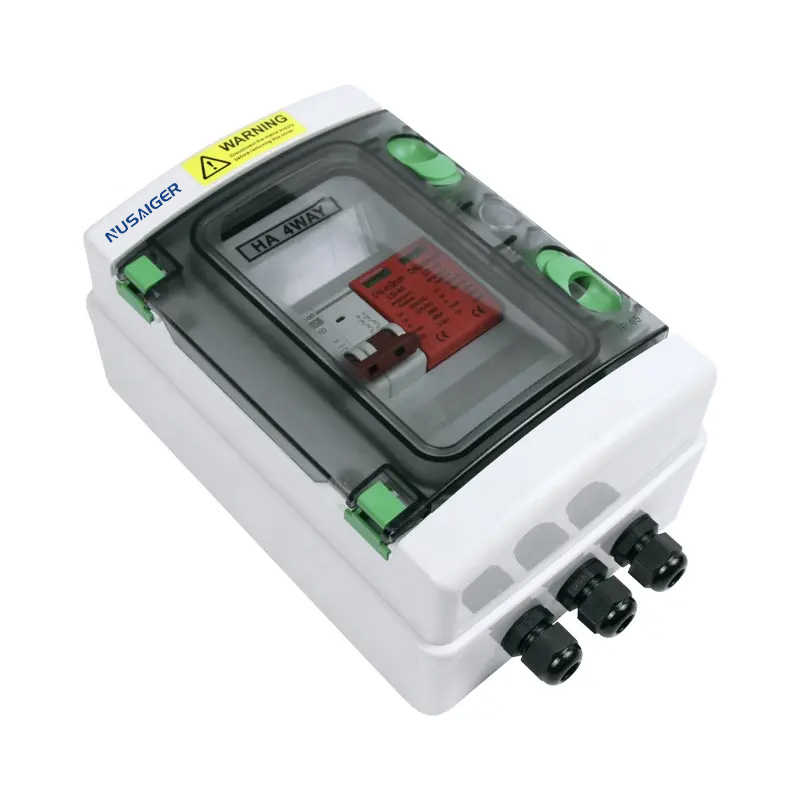Understanding Safety Standards and Certifications for PV Combiner Boxes
A comprehensive guide to compliance, international standards, and why certifications matter in solar projects.
1. Introduction
In the solar industry, PV combiner boxes may appear to be small components compared to modules and inverters,
but their role in system safety and compliance is critical.
International safety standards and certifications ensure that combiner boxes not only function properly but
also protect against hazards like fire, arc faults, and electrical surges.
This article explores the most important certifications and standards for PV combiner boxes,
helping developers, EPCs, and operators make informed decisions and avoid costly compliance pitfalls.
2. Why Safety Standards Matter in PV Combiner Boxes
- Legal Compliance: Most countries require PV components to meet recognized standards before installation.
- Insurance & Warranty: Non-certified equipment may void insurance claims or manufacturer warranties.
- System Safety: Standards ensure protection against fire, overcurrent, and lightning surges.
- Project Bankability: Lenders and investors demand certified equipment to reduce project risks.
3. Key International Standards for PV Combiner Boxes
3.1 IEC Standards
The International Electrotechnical Commission (IEC) sets widely adopted standards, including:
- IEC 61439: Low-voltage switchgear and controlgear assemblies.
- IEC 60269: Fuse standards for overcurrent protection.
- IEC 61643: Surge protective devices (SPD) for low-voltage power systems.
- IEC 60529: IP rating (dust and water ingress protection).
3.2 UL Standards (North America)
Underwriters Laboratories (UL) standards are dominant in the US market:
- UL 1741: Inverters, combiners, and associated equipment for renewable energy.
- UL 508A: Industrial control panels.
- UL 1449: Surge protective devices.
3.3 CE Marking (Europe)
CE marking is mandatory in the European Economic Area (EEA). It indicates compliance with EU directives such as:
- Low Voltage Directive (LVD)
- Electromagnetic Compatibility (EMC)
- RoHS (Restriction of Hazardous Substances)
4. Regional Standards and Certifications
- China: GB/T standards for PV equipment.
- India: BIS certification for solar components.
- Australia: AS/NZS 5033 for PV installations.
- Middle East: GCC and SASO standards depending on the country.
Understanding regional requirements is crucial for international EPC contractors and manufacturers exporting equipment.
5. Certification Bodies and Testing Process
Certification is typically conducted by third-party laboratories such as TÜV, UL, or Intertek.
Testing involves:
- Temperature rise tests for conductors and terminals.
- Dielectric withstand tests.
- Ingress protection (IP) and mechanical impact (IK) tests.
- SPD performance and fuse coordination verification.
6. Consequences of Using Non-Certified Combiner Boxes
- Project rejection during inspection or commissioning.
- Insurance claim denial in case of fire or accident.
- Increased failure rate, leading to downtime and energy loss.
- Potential legal liabilities for EPCs or owners.
7. How to Verify Certification Claims
Some manufacturers may falsely advertise compliance. To ensure authenticity:
- Check the certificate number on the certifying body’s website.
- Request a test report from the manufacturer.
- Look for physical certification marks (UL, TÜV, CE) on the product.
8. Best Practices in Choosing Certified Combiner Boxes
- Select vendors with proven track records and transparent certification records.
- Match certification scope to project requirements (e.g., UL for US projects).
- Consider environmental standards (salt mist, humidity, dust).
- Factor certifications into lifecycle cost, not just purchase price.
9. Case Studies
Case Study 1: Non-Certified Box in Africa
A commercial PV system failed within one year due to fire caused by poor-quality combiner boxes. Insurance claims were denied as the product lacked UL/IEC compliance.
Case Study 2: Certified Box in Europe
A German EPC used IEC 61439 and CE-certified boxes. Despite harsh winter conditions, the system operated safely for over 10 years without major incidents.
Case Study 3: North America Utility Project
A 100 MW solar farm passed commissioning smoothly due to full UL-certified combiner boxes, securing both financing and insurance coverage.
10. Future Trends in PV Combiner Box Certification
- Inclusion of cybersecurity for smart combiner boxes.
- Higher surge withstand requirements for regions with extreme lightning.
- Integration with IoT monitoring platforms for compliance tracking.
11. Conclusion
Safety standards and certifications are not optional in PV combiner boxes—they are fundamental to project safety, financial security, and long-term reliability.
Developers and EPCs must prioritize certified products to avoid costly risks, while manufacturers must stay ahead of evolving global standards.



